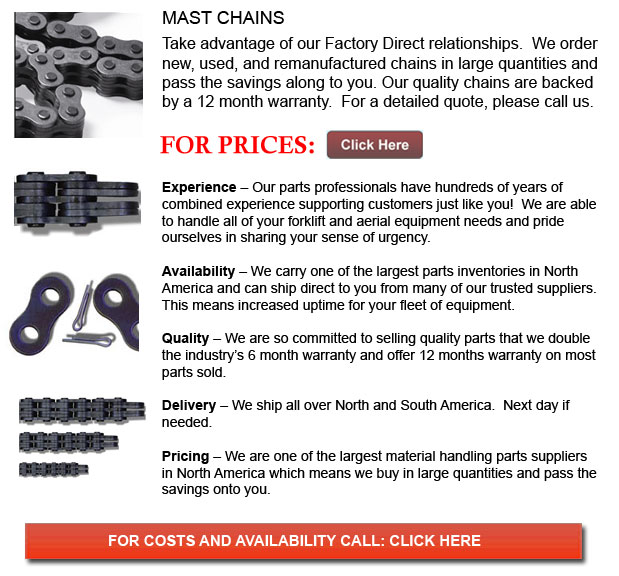
Mast Chains - Leaf Chains comprise various functions and are regulated by ANSI. They are designed for tension linkage, lift truck masts and for low-speed pulling, and as balancers between head and counterweight in several machine tools. Leaf chains are sometimes likewise called Balance Chains.
Features and Construction
Leaf chains are steel chains utilizing a simple link plate and pin construction. The chain number refers to the lacing of the links and the pitch. The chains have specific features like for example high tensile strength per section area, that enables the design of smaller mechanisms. There are B- and A+ kind chains in this particular series and both the AL6 and BL6 Series contain the same pitch as RS60. Finally, these chains cannot be driven with sprockets.
Selection and Handling
Comparably, in roller chains, all of the link plates maintain higher fatigue resistance because of the compressive stress of press fits, whereas in leaf chains, just two outer plates are press fit. The tensile strength of leaf chains is high and the utmost allowable tension is low. If handling leaf chains it is essential to consult the manufacturer's instruction manual so as to ensure the safety factor is outlined and use safety measures always. It is a great idea to carry out utmost caution and use extra safety measures in functions wherein the consequences of chain failure are severe.
Utilizing much more plates in the lacing leads to the higher tensile strength. As this does not improve the utmost permissible tension directly, the number of plates used can be restricted. The chains need frequent lubrication for the reason that the pins link directly on the plates, producing an extremely high bearing pressure. Utilizing a SAE 30 or 40 machine oil is normally suggested for nearly all applications. If the chain is cycled more than 1000 times day by day or if the chain speed is more than 30m per minute, it would wear really quick, even with continual lubrication. Thus, in either of these conditions the use of RS Roller Chains would be much more suitable.
AL type chains are only to be utilized under particular conditions such as where there are no shock loads or if wear is not a big issue. Be certain that the number of cycles does not go beyond one hundred per day. The BL-type would be better suited under different conditions.
If a chain utilizing a lower safety factor is chosen then the stress load in components would become higher. If chains are used with corrosive elements, then they may become fatigued and break somewhat easily. Doing regular maintenance is really important if operating under these types of conditions.
The type of end link of the chain, whether it is an inner link or outer link, determines the shape of the clevis. Clevis connectors or also called Clevis pins are made by manufacturers but normally, the user supplies the clevis. An improperly constructed clevis can decrease the working life of the chain. The strands should be finished to length by the maker. Check the ANSI standard or contact the manufacturer.
![]() Click to Download the pdf
Click to Download the pdf
Forklift Parts
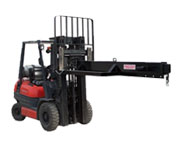
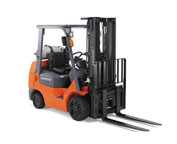
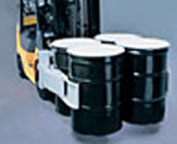
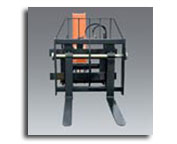
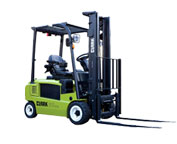

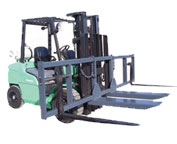
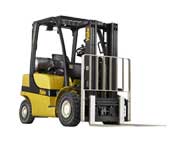
Lift Parts Express
TOLL FREE: 1-888-695-7994
forkliftpartsmississippi.com
Email Us
About Us


